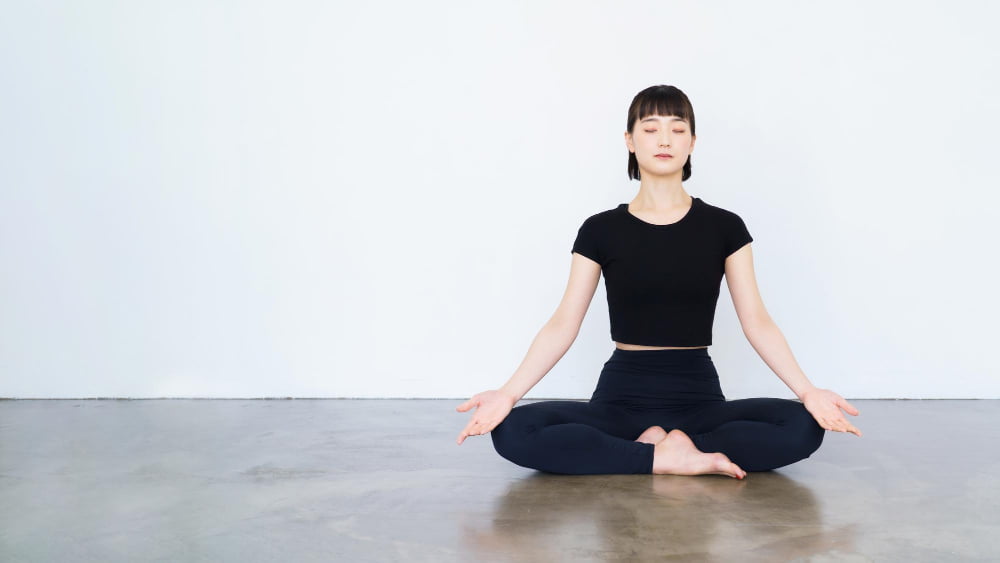Explore why constant thinking during meditation could inhibit your mindfulness journey because the brain’s perception of silence is a powerful tool in achieving inner peace.
Meditation is often misunderstood as a process of emptying the mind of all thoughts. However, it’s not about stopping your thoughts, but learning to observe them without judgment. During meditation, it’s perfectly normal and even inevitable to have thoughts. The key is not to engage with them or get carried away by them.
As you continue to meditate, you’ll discover how to gently guide your focus back to your breath or mantra, achieving a state of mindful awareness. In this article, you’ll explore the role of thoughts in meditation, learn techniques to manage them, and understand how to cultivate mindfulness.
Key takeaways:
- Thinking is natural, your brain is designed to think.
- Aim for awareness, not emptiness.
- Let thoughts flow, don’t force suppression.
- Focus over force, gently refocus when mind drifts.
- Observe thoughts, don’t judge or categorize them.
Misunderstandings of Meditation

In observing meditation practices, most people often misconstrue the process as an attempt to completely rid their minds of thoughts, to arrive at a state of mental emptiness. However, this is far from the truth.
1. Thinking is Natural: The human brain is designed to think; it is an inherent capability that happens involuntarily in both our conscious and subconscious states.
2. Aim for Awareness, not Emptiness: Meditation doesn’t seek to eliminate thoughts, but rather to create a space of awareness where thoughts are recognized and observed without judgment.
3. Let Thoughts Flow: Instead of forcefully suppressing thoughts, let them flow like a river. The objective is not to interact or engage with the thoughts but to acknowledge their presence.
4. Focus Over Force: The goal of meditation is to maintain focus despite thought distractions, by gently refocusing when you notice your mind has drifted.
Remember, understanding these facets of meditation is essential in realizing its essence, and in fostering a mindful meditation practice.
Setting Your Meditation Intentions

An essential starting point for a successful meditation practice involves setting clear intentions. They work as a compass, guiding your consciousness towards achieving tranquillity and fostering personal growth.
Here are a few important concepts behind setting your meditation intentions effectively:
- Being Present: A common intention, focusing on the present helps you detach from past regrets or future anxieties. Emphasize conscious awareness of the current moment.
- Cultivating Kindness: You might choose to concentrate on growing compassion towards yourself and others. This benevolent focus can help to foster positive emotions and thoughts.
- Embracing Change: Acknowledging that life is dynamic and ever-changing can be a powerful intention. This perception encourages acceptance and adaptability.
- Expanding Awareness: Aiming to broaden your consciousness, beyond your physical existence, can significantly deepen your meditative experience.
Remember, there is no right or wrong when devising your intention; the priority is whatever resonates with your unique needs and aspirations.
Harnessing the Breath for Mindfulness

Breathing plays a fundamental role in mindfulness and meditation practices. Firstly, it is an automatic process, one that continues without conscious thought, making it an excellent anchor for your attention. Secondly, it is a barometer for your emotional state, often becoming shallow and quick when stressed, or wide and slow during moments of peace.
To harness your breath effectively, follow these key pointers:
- Observe: Simply pay attention to your breath as it is, without attempting to change or control it. Notice the sensation of the air as you breathe in and out.
- Engage the body: Feel the body movement that accompanies each breath. Your stomach and chest rise and fall in a gentle rhythm; bring this into your conscious awareness.
- Tempo: As you get more comfortable, you might consciously slow your breath, which can help in eliciting a relaxation response.
- Abdominal breathing: Try to engage your diaphragm for deeper breaths, rather than surface-level chest breathing.
Remember, the goal isn’t to force a specific type of breathing, but rather to harness the natural process as a tool of focus and awareness. This is a step to achieve a state of meditation where you become an observer of your own thoughts without becoming engaged or affected by them.
Focusing Your Meditation

The act of focusing during meditation isn’t about the elimination of thoughts, but instead about redirecting your attention. It’s essential to allow your thoughts to come and go freely, merely observing them without judgment or attachment.
1. Observation: Rather than suppressing thoughts, take a step back and simply observe them. See them as clouds passing by in the sky of your mind.
2. Non-Judgement: View your thoughts without categorizing them as good or bad, right or wrong. No judgment needs to take place during meditation.
3. Train of thoughts: Picture your stream of consciousness as a train, you are at the station, and the thoughts are merely trains passing by. Do not get on any, just watch them pass.
4. Shifting Attention: Whenever your mind seems to wander, gently shift your attention back to the sensation of your breath or the rhythm of your mantra, if you use one.
Incorporate these points into your practice, they offer a broader perspective about the role of thoughts during meditation and showcase the importance of focus in a successful meditative journey.
The Role and Use of Mantras in Meditation

Practiced by many seasoned meditators, mantras serve as a kind of soothing balm for a busy mind, a vessel into the tranquil state of meditation. They come in myriad forms, from single syllable sounds like “Om“, a spiritual icon, to more complex phrases set in Sanskrit.
Using a mantra is like holding a gentle leash on your thoughts. It doesn’t stifle them, rather guides them towards a state of quietude. The key here is repetition, soft and rhythmic, not forced, strengthening the connection to tranquility.
Mantras, when pronounced correctly, can harness specific vibrational frequencies, said to improve aspects of life, like health or happiness. Although choosing a mantra can be a personal quest, one can start with universal mantras like “Om Mani Padme Hum” or “peace begins with me“.
To engage, one must reverberate the mantra slowly in the recesses of their mind, careful to not let it dominate the thoughts. It should rather be a part of the silent backdrop, a harmonious humming in the grace of your mind.
Whether your goal is to cultivate stillness, channel energy, or to attain a heightened sense of consciousness, integrating mantras can effectively transform the meditative experience.
Understanding the True Intent of Meditating

Delving deeper into meditation, it is, at its core, not about eliminating thoughts entirely but learning to observe them without judgment. The mind is inherently designed to generate thoughts continuously, so it’s normal and acceptable for them to arise during your practice.
The objective is to notice these thoughts as they surface and then gently redirect your focus back to your chosen meditation object, such as your breath or mantra. This process helps create a level of detachment from the incessant stream of thoughts and fosters a sense of inner peace and calm.
Remember, the aim is not to wrestle with your mind to seize its meanderings, but to humbly accept their existence while sustaining your focus.
Fine-tuning Techniques for Achieving a Meditative State

Start your meditation session by finding a quiet, comfortable space where distractions are minimal. Position your body upright yet relaxed, either seated or lying down. This will assist in maintaining alertness and avoiding sleepiness which frequently arises in overly comfortable positions.
Incorporating a sensory focus is a commonly employed method to hone your concentration. This could involve focusing on your breath — its rhythm, depth and the sensation it creates as it enters and leaves your body. Alternatively, you might tune into the sensory details of a specific object, its texture, color, or form.
Additionally, certain visualization practices can foster concentration. Envisaging a peaceful place or a ball of light can aid in maintaining focus throughout the session. Guided meditations, available through various apps and online platforms, also offer step by step instructions for visualizations.
Importantly, exercise patience with your wandering mind. Do not try to empty your mind or suppress thoughts. This is a misunderstanding. In fact, thoughts that arise during meditation serve as important cues to refocus on your chosen sensory experience or visualization. It’s a continuous process of conscious recentering. Reminding yourself to gently return to the object of your focus helps strengthen your concentration over time, just like a muscle.
Incorporating these fine-tuning techniques into your meditation practice can help foster improved concentration and mindfulness, leading you closer to achieving a true meditative state.
FAQ
Should you think about anything while meditating?
While meditating, the aim is not to have an empty mind but rather to calmly observe and witness one’s thoughts without becoming emotionally charged.
Is it normal to think while meditating?
Yes, it is entirely normal for the mind to wander and engage in thoughts during meditation.
How do I know if I am meditating correctly?
You know you are meditating correctly when there’s an increase in your level of awareness, and you start paying attention to your thoughts, feelings, and environment more intensely than before.
Should your mind be empty when meditating?
No, your mind should not be empty when meditating; rather, the focus of meditation is to attentively observe the present moment, including thoughts, emotions, and sensations.
How to deal with intrusive thoughts during meditation?
To deal with intrusive thoughts during meditation, simply acknowledge the thought without judgment, and then gently return your focus back to the object of your meditation, such as your breath or a mantra.
How does one maintain focus during meditation sessions?
To maintain focus during meditation sessions, focus on the rhythm of your breath, gently return attention to this anchoring sensation each time thoughts or distractions arise.
What techniques can be used to steer the mind back when it starts to wander during meditation?
To steer the mind back when it begins to wander during meditation, employ techniques such as gentle redirection of focus to the breath, physical sensations, or a chosen mantra.